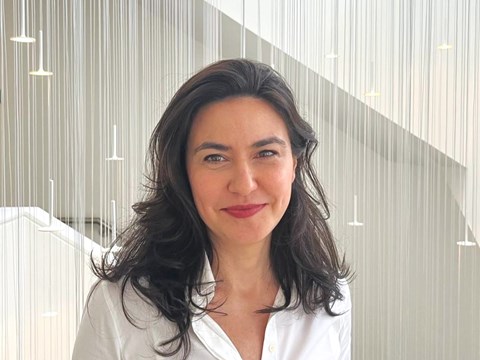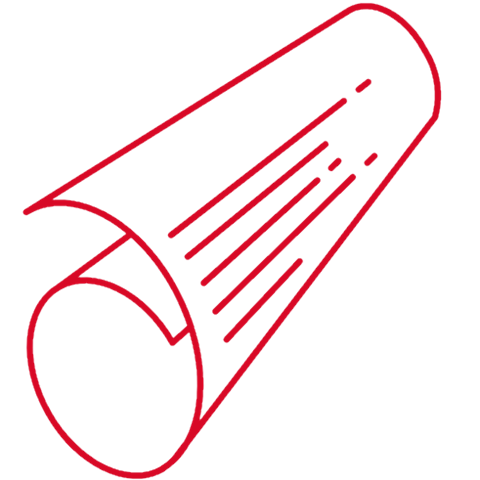The Unsung Hero of Marketing Success: The “How” That Facilitates The “What”
28 Nov 2024
Marketing is often celebrated for its creativity and innovation, the eye-catching campaigns and brand stories that captivate audiences.
But behind every successful campaign, an essential component ensures it all gets done: the operating model. Part of the “how” of marketing, a seamless, structured process, will enable the “what” of marketing to shine. As a leader, you are responsible for simplifying complexity when creating structure.
As David Ogilvy once said, “Give me the freedom of a tight brief,” reminding us that structure and creativity are not in opposition; they enable each other.
A well-defined process isn’t just support - it’s the foundation that helps marketers and their agency partners do their best work. But how can you lead when it comes to ensuring that there is a clear outline for both internal and external teams?
Setting the North Star: long-term vision, objectives, and a measurement framework
To empower teams to do their best work, starting with a clear vision, well-defined objectives, and a robust measurement framework is essential. This foundation acts as the partnership’s ‘North Star’, ensuring everyone— internal teams and external agencies—is aligned toward the same goals. This means that everyone can operate with clarity, knowing what success looks like and how it will be measured.
This long-term vision and set of objectives not only direct efforts but also ensure consistency, enabling teams to stay focused on the bigger picture, even as they execute day-to-day tasks.
Process as the backbone of trust and collaboration
While objectives provide direction, it’s the process that brings these goals to life in a collaborative, structured way. A strong, transparent process acts as the backbone of a successful partnership, fostering trust and facilitating smooth collaboration.
This is particularly important when working with agency partners, each of whom brings unique expertise and a different perspective to the table. Your operating model may well bring in a variety of overlapping talents from different agencies or in-house teams, so a well-designed process outlines clear roles and responsibilities, ensuring that each partner understands their contribution to the overall strategy.
In a robust partnership model, some agencies may take on the role of strategic leaders, while others focus on executional excellence. Both roles are equally vital, and each team member will contribute more effectively if they understand their specific purpose and value. By setting these expectations from the start, the partnership can avoid confusion and ensure that every agency is positioned for success.
It should be a part of every marketer’s wheelhouse to establish a solid marketing operating model or support defined ways of working so this is clear.
Efficiency and the impact on remuneration models
A well-structured operating model reduces administrative burdens and makes day-to-day interactions far more efficient. Time is money, often literally with agency partnerships.
With clearly defined processes, teams no longer waste time on repetitive questions or unproductive back-and-forth. Instead, they can focus on delivering value and maximising the impact of each campaign.
This operational efficiency also has a direct impact on remuneration models. With a streamlined process, marketers and agencies can more easily shift to outcome-based or performance-linked remuneration models, where compensation reflects the tangible value delivered, rather than the hours logged.
Automation for seamless workflows
Today’s technology offers a range of automation opportunities across the marketing process, allowing teams to further increase efficiency in operating models without adding more resources. Workflow automation can eliminate redundant tasks and simplify project management, freeing teams from low-value admin work and enabling them to focus on higher-impact activities.
Automation in approvals, asset management, and data-driven audience insights can streamline collaboration, allowing for more agile and effective campaigns, and focusing more fully on the strategic and creative aspects of work.
Process as a means to an end
The process is essential, but it should never overshadow the actual thing!
The ultimate goal of any structured process is to support creativity, innovation, and impact—not to become a rigid set of rules that stifle them.
A good process should set clear parameters while allowing room for flexibility. Flexibility in process is supported by open communication. When agencies and marketers are free to discuss and adjust processes as needed, they’re better able to focus on what really matters: creating work that resonates with audiences. Don’t allow process to become a jail, ensure the full team is able to flex it to work for them, not against.
This openness to evolution enables the entire team to benefit from a model that both supports and enhances their creativity.
Structure as a catalyst for creativity
Clear ways of working are more than just an operational detail—they’re a crucial element that enables both creativity and effectiveness.
When teams have a structured, transparent framework for collaboration, they’re empowered to push boundaries, innovate, and deliver work that truly stands out.
The “how” of marketing, then, is the quiet hero of every effective marketing team. With a clear vision, a robust process, and an openness to evolution, marketers and their agency partners can focus on what they do best: bringing compelling, meaningful ideas to life.
—--
Want to discuss how you can support your ecosystem with your operating model design? Talk to AARs Cristiana Spataru. Cristiana helps marketers to optimise their marketing ecosystems (including in-housing business cases, ways of working), develop customer-centric end-to-end processes, strategic prioritisation frameworks and lead change management programmes.
About The Author

Cristiana Spataru
Senior Consultant
Cristiana brings over 20 years of experience as a marketing and communications expert, with a significant portion of her career dedicated to leading the development of marketing and communication solutions for global brands. Her approach is rooted in a deep understanding of consumer behaviour, an analytical assessment of market data, and a creative flair for problem-solving, allowing her to craft strategies that are effective and adaptable for the ever-evolving global marketplace. Having spent time in award-winning agencies before moving to consulting, she has rich experience in accelerating business growth for matrix organisations across diverse industries and geographies. Cristiana helps marketers across the following areas: optimising marketing ecosystems (including in-housing business cases, ways of working), developing customer-centric end-to-end processes, strategic prioritisation frameworks and leading change management programmes.
Read full bio


